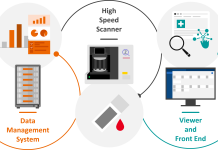Open Access Government discusses STI prevention in the U.S., and the benefits and priorities of the STI National Strategic Plan 2021-2025
The Center for Disease Control and Prevention (CDC) estimates that at least one in five people in the U.S. have an STI. As well as the STI epidemic gravely affecting the health of people and communities, it is extremely costly to the healthcare system. When left untreated, STIs can lead to long term health problems such as chronic pelvic pain, infertility, and poor birth outcomes including the death of newborns. STIs can also increase the risk of both getting HIV and giving HIV to others.
Furthermore, human papillomavirus (HPV) infection causes about 35,000 cases of cancer each year, even though there is a safe and highly effective vaccine that prevents the cancer-causing strains of HPV. STIs affect the quality of life for millions of Americans and cost the healthcare system billions of dollars annually. Therefore, prioritising the integration of policy, science and program is particularly important in the field of STI prevention.
At the end of 2020, Dr Gail Bolan, MD, the Former Director for the Division of STD Prevention at the CDC highlighted that the COVID-19 pandemic has exacerbated many of the challenges that the healthcare sector already faced, particularly regarding sexual health. It is vital to address the social, cultural, and economic conditions that make it more difficult for sexually active people to stay healthy. CDC studies have shown that young people and women face some of the biggest impacts and most significant consequences of STIs. Furthermore, data has shown the heavy toll of STIs among racial/ethnic minority groups and people who are LGBTQ. As a result, calling for a new groundbreaking national strategy to tackle this and support hard-hit populations is crucial.
STI plan
The ‘Sexually Transmitted Infections National Strategic Plan for the United States: 2021-2025’ sets forth a vision for the nation with goals, objectives and strategies to meaningfully prevent and control STIs in the U.S. It is intended to serve as a roadmap for federal and non-federal stakeholders at all levels to reverse the upward trends in STI rates.
Former Director Gail Bolan stated that “the STI Plan could not come at a better time: STD rates continue their historic climb contributing to myriad adverse health effects, including infant death and increased HIV infections.”
The vision of the STI Plan states: “The United States will be a place where sexually transmitted infections are prevented and where every person has high-quality STI prevention, care, and treatment while living free from stigma and discrimination. This vision includes all people, regardless of age, sex, gender identity, sexual orientation, race, ethnicity, religion, disability, geographic location, or socioeconomic circumstance.”
The STI Plan has five principal goals, each of which has its own set of objectives and strategies. The objectives and strategies are evidence-and science-based, flexible, integrated, and promote innovative approaches:
- Preventing new STIs.
- Improving the health of people by reducing the harmful outcomes of STIs.
- Accelerating progress in STI research, technology, and innovation.
- Reducing STI-related health disparities and health inequities, ensuring everyone receives the same care.
- Achieving integrated, coordinated efforts that address the STI epidemic.
The CDC is also particularly supporting adolescent’s sexual health, as it is estimated that youth ages 15-24 make up just over 1/4 of the sexually active population, but account for half of the 20 million new sexually transmitted infections that occur in the U.S. each year. Through its Division of Adolescent and School Health (DASH), the CDC promotes an environment where young people can gain fundamental health knowledge and skills, establish healthy behaviours and connect to health services to prevent HIV, STDs, and unintended pregnancies.
DASH works to protect and improve the health of young people by collecting and analysing data that drives action, translating science into innovative programs and tools that protect youth, and by funding education agencies that reach nearly two million students. Taking a school-based health promotion and disease prevention approach, the division builds strategic partnerships and works to prepare healthy youth for a successful future. It is clear to see that DASH and by extension, the U.S. CDC is committed to preventing HIV, STDs, and pregnancy among all youth, and all Americans.











